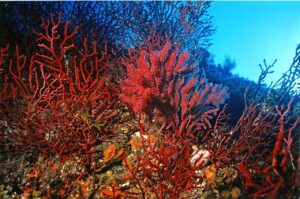Reading Time: 2 min
The Food and Agriculture Organisation (FAO) is a specialised agency operated under the wing of United Nations with the ultimate goal of achieving global food security. The FAO works with over 130 countries and local NGOs to implement farming strategies and programs to improve agribusiness, food safety and production.
FAO achievements at a glance
- Eradicated the deadly livestock viral disease, rinderpest;
- created international standards, Codex Alimentarius, to ensure safe, good food for everyone;
- eliminated human ‘river blindness’ in 11 West African countries;
- maintains the world’s largest and most comprehensive statistical database on food and agriculture;
- created and led adoption of the first ever binding international accord to combat illegal fishing, the Port State Measures Agreement;
- produced globally-agreed upon guidelines on tenure rights to ensure equitable access to land, fisheries and forests;
- helped halve the number of hungry in Latin America and the Caribbean;
- and promoted the Right to Food as a human right guaranteed in constitutions and frameworks of over 30 countries.
Access the FAOs databases below:
- FAOSTAT – FAO’s corporate database
- Free and easy access to data for 245 countries and 35 regional areas from 1961 through the most recent year available.
- AQUASTAT
- Global information system of water and agriculture. AQUASTAT provides comprehensive information and data on water resources, water use, agricultural water management and non-conventional sources of water across the world.
- CountrySTAT
- CountrySTAT is a web-based information system for food and agriculture statistics at regional, national and subnational levels.
- Fisheries and aquaculture
- Comprehensive fisheries and aquaculture statistics are structured within data collections on a global and regional basis. These collections are available through various formats, tools and information products, including online query tools and the software FishStatJ for data exploration and extraction.
- Gender and land rights database
- Disparities on land access are one of the major causes for social and gender inequalities in rural areas. Gender differentiated rights to land have implications on rural food security and nutrition as well as on the wellbeing of rural families and individuals. Learn more about the different factors that relate to gender inequalities embedded in land rights.
- Agricultural market information system (AMIS)
- AMIS is a G20 initiative to enhance food market transparency and encourage coordination of policy action in response to market uncertainty. The initial focus of AMIS is on four grains that are particularly important in international food markets: wheat, maize, rice and soybeans.
- Global Information and Early Warning System (GIEWS)
- GIEWS provides information on food production and food security for all countries. The commodity price database disseminates up-to-date information on prices of agricultural commodities. Includes weekly data, monthly and annual averages.
- Global Livestock Production and Health Atlas (GLiPHA)
-
- GLiPHA is an extensive data warehouse containing global, sub-national information on the livestock sector. It shows livestock related information in the form of maps, graphs and exportable tables.
-














